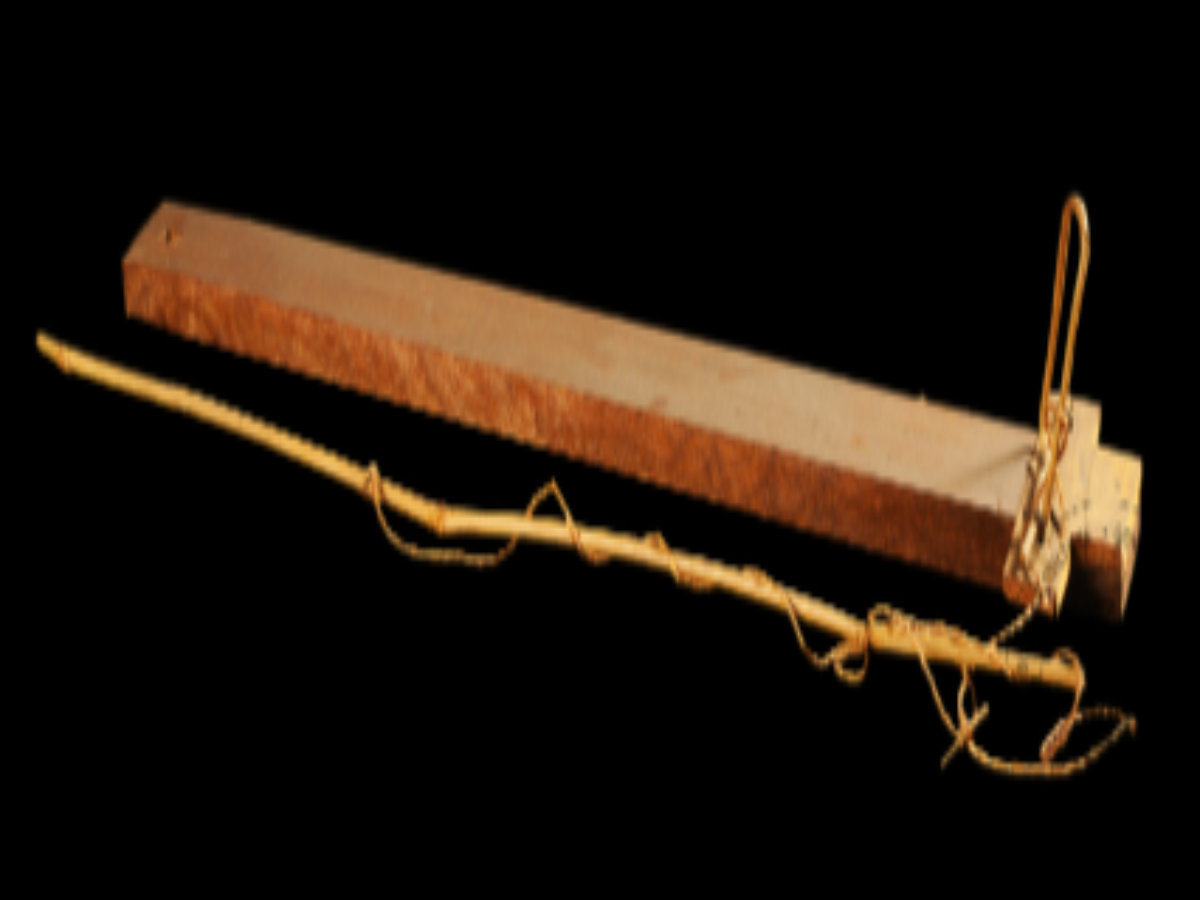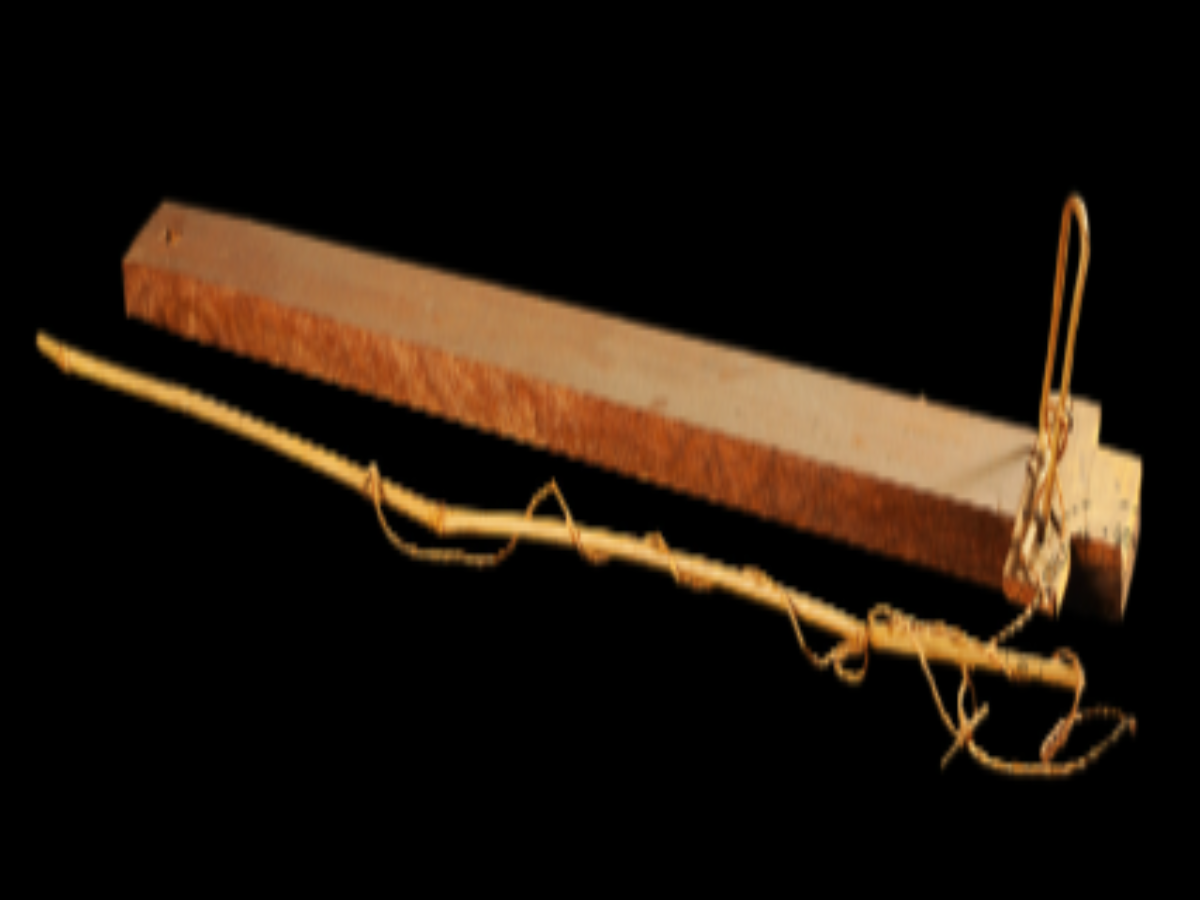State
Tribe Name
Art Type
short description
The Mizo tribe in Mizoram used, and use, the wooden trap as a conventional hunting tool that can give the richer perspective on indigenous knowledge and subsistence practices balanced with nature. Designed specifically to trap small animals, this tool reflects Mizo resourcefulness and craftsmanship, given their forest life.The trap has a T-shape, with the long wooden piece forming the main body, carved out of locally available hardwood. At one side are the working mechanisms of the trap, designed for optimum working efficiency. A small piece of bamboo, which plays an important role in the trigger mechanism, is tied into place by a twisted jute rope—an ecological, biodegradable material that fits perfectly into an environmentally conscious lifestyle design by the Mizo.
Thumbnail

Filter Postion
Left
Filter Background
Off
Theme
Filter Header Image

content
Image

description
The Mizo tribe in Mizoram used, and use, the wooden trap as a conventional hunting tool that can give the richer perspective on indigenous knowledge and subsistence practices balanced with nature. Designed specifically to trap small animals, this tool reflects Mizo resourcefulness and craftsmanship, given their forest life.The trap has a T-shape, with the long wooden piece forming the main body, carved out of locally available hardwood. At one side are the working mechanisms of the trap, designed for optimum working efficiency. A small piece of bamboo, which plays an important role in the trigger mechanism, is tied into place by a twisted jute rope—an ecological, biodegradable material that fits perfectly into an environmentally conscious lifestyle design by the Mizo.
The traditional trap was mainly applied in forested spaces where small animals such as rodents or birds were sought after as food. The bamboo component acts as a spring or release trigger, snapping shut when disturbed. It is a simple yet effective design, depending basically on gravity combined with the tension of the trigger, and easily reset and reused multiple times.More than just a hunting tool, the wooden trap is part of the oral heritage of the Mizo community, handed down from generation to generation. The trap embodies various aspects of tribal culture: self-reliance, survival skills, and knowledge of the environment.
The traditional trap was mainly applied in forested spaces where small animals such as rodents or birds were sought after as food. The bamboo component acts as a spring or release trigger, snapping shut when disturbed. It is a simple yet effective design, depending basically on gravity combined with the tension of the trigger, and easily reset and reused multiple times.More than just a hunting tool, the wooden trap is part of the oral heritage of the Mizo community, handed down from generation to generation. The trap embodies various aspects of tribal culture: self-reliance, survival skills, and knowledge of the environment.
Image Mode
landscape
promoted
On
Verified
Off
